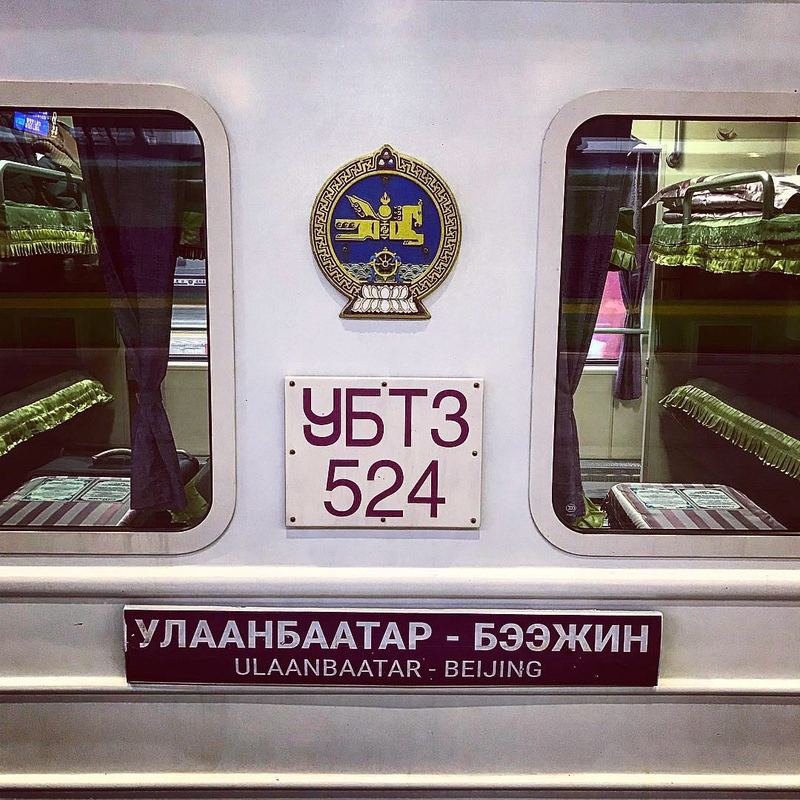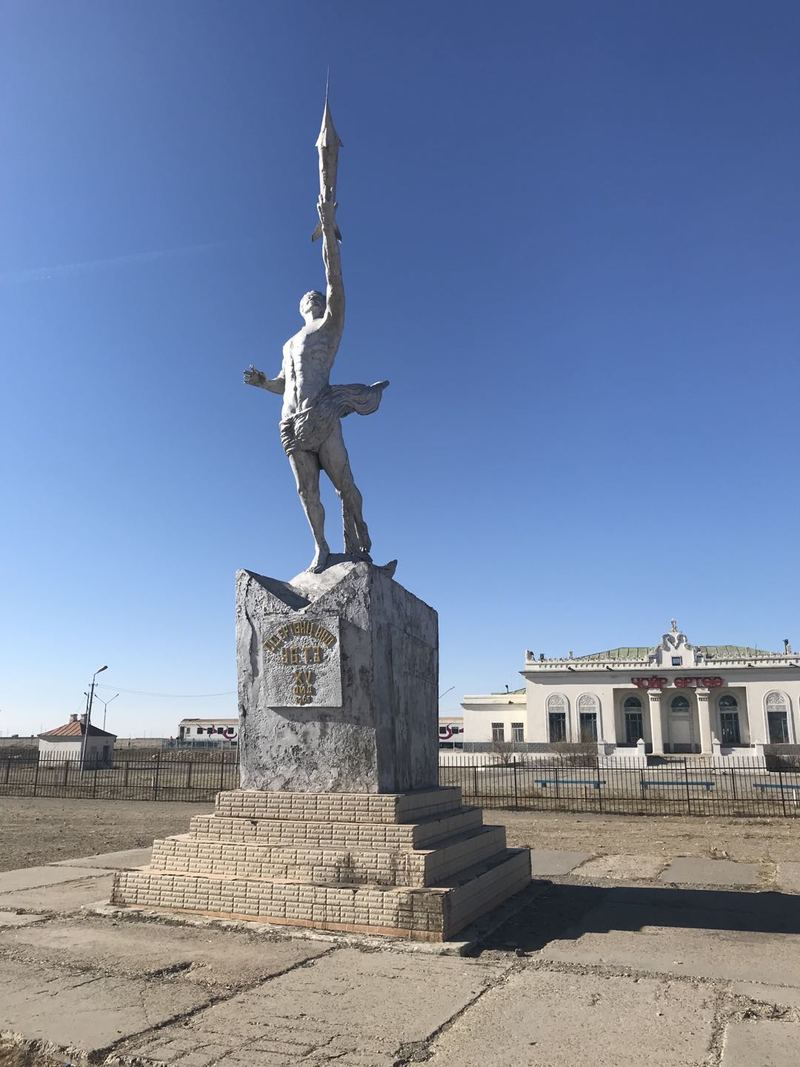Visitors will take the journey generally as part of a more extensive trip from Moscow to Beijing, but the journey into Mongolia isn't taken on just the Trans Siberian railway!
Trans-Siberian Railway Line Names
Trans-Mongolian Route
Tips and Tricks of Trans-Siberian Travel
What to Take on the Trans-Siberian
Tickets and Classes on the Trans-Siberian
For many visitors to Mongolia, the Trans-Siberian Railway will be the main entrance into the country, and indeed back out.
Visitors will take the journey generally as part of a more extensive trip from Moscow to Beijing, but the journey into Mongolia isn't taken on just the Trans Siberian railway!

Trans-Siberian Railway History
The Trans-Siberian railway was conceived in the 19th century. It was seen as a way to link the more remote parts of Russia predominantly secluded Siberia.
Before the rail network, any journey that took place would utilise a series of roads and rivers to transport people as well as goods. The winter was the best time to do this as the frozen rivers offered a dangerous but handy network traversable by horse and sledge. A rail line would also be an excellent way for the Russian empire to control its territory - as was happening within Europe at the time. Following 25 years of planning, the rail line was completed in 1916, making a continuous line from Moscow to Vladivostok.
You may well notice the fact that we have not mentioned Mongolia yet as part of the line.
That is because it is not officially part of the Trans Siberian route, but a different rail line.

Trans-Siberian Railway Line Names
Trans-Siberian
As above, this line runs from Moscow to Vladivostok 9,289 km. It was completed in 1916. It's the 3rd longest rail journey in the world.
Trans-Mongolian
For travellers, it runs from Moscow to Beijing cutting through Mongolia the line technically starts from Ulan-Ude branching of off the Tran Siberian line.
From Ulan Ude to Beijing, the distance covered is 2,215 km. It was completed in 1956.
Trans-Manchurian
Also known as the China Eastern Railway, this line runs between the Siberian city of Chita and Beijing. The total length of the route is 2795 KM, with the Beijing section of the journey being a newer addition.
Trans-Mongolian Route
As mentioned, the official Trans-Mongolian begins in Ulan-Ude, but many passengers will start their journey in Moscow and follow part of the Tran-Siberian.
We have written the following guide to cover your Trans-Mongolian section of the adventure.
Ulan-Ude
Capital of the Buryat autonomous region, this area and peoples were once part of the Mongol empire.
The city of Ulan-Ude, founded in 1666, now has a population of 450,000 inhabitants.
If you have time, be sure to visit the Ethnographical Museum, cathedral and stop by the city square as it is home to a giant Lenin head.
Built-in 1971 it is said to be the largest Lenin head statue ever been built. The train will only stop here for 40 mins if coming from Moscow.
Naushki
Naushki is a small settlement located on the Mongolian-Russian border. It has a decreasing population of around 3000.
There isn't too much to see here, but if you have time and are permitted to leave the train, it is possible to climb the small grassy hill to the west.
The train will generally stop here for 2-3 hrs to complete the immigration formalities.
Sukhbaatar City
Founded in 1940 and located on the banks of the Orkhon and Selenga Rivers, this growing city is the Capital of Selenge Aimag (province).
Sukhbaatar city is named after the Mongolian hero Damin Sukhbaatar who passed away in 1923. The train will stop here for 2-3 hrs while immigration the Mongolian official's process your entry.
There isn't enough time to visit the city, but if allowed to leave the train one can pick up a quick beer in the Irish American pub around 200M left of the train station.
Darkhan
Darkhan is the second-largest city in Mongolia with a population of 90,000. Darkhan city developed as an industrial hub in the 1960s with the aid of Soviet funding; this is evident in the settlements impressive Soviet architecture. As the train only ever stops here for 10-20 minutes, it is never enough time for exploration.
However, Darkhan can be a good jumping point for visiting the Northern section of Mongolia, especially as several trains are running daily from here to the nation's Capital.
Ulaanbaatar
The capital city of Mongolia is home to half of the country's population. For many, it's a city you either love or hate - but do give it a chance. The hub of the country and a great place to stop, one can spend a couple of days in Ulaanbaatar as well as using it as a jumping point to explore the vast expanse that is Mongolia.
Jeeps, busses and flights will carry visitors to the mountainous west, the stepped interior or the deserts of the south.
Many travellers will stay here for just three days until the next train; we say if you genuinely want to tell people that you have visited Mongolia then remain for at least a week.
Choir
Choir grew around the once vast Soviet airbase located here, although this has now long gone, leaving Choir to feel like a real dusty border town. The population is around 10,000, although it feels less.
The train will stop here for 20-30 mins long enough to run out of the station and take a picture of an impressive statue. The statue in front of the station erected to honour Jugderemidiin Gurragchaa Mongolia's first cosmonaut is of Uri Gagarin.

Sainshand
Capital of Mongolia's Dornogovi province, this town is located deep within the Gobi desert. Once a hive of activity for Russian soldiers and their military equipment this has all now gone. However, the city here is still growing with a healthy population of 25,000 residents.
The train will stop for around 30-40 mins, which enough time to snap a few pictures of the station and skip into the small park to the west of the line.
Zamiin Ud
The train mostly stops here at night, so nothing much to see apart from what appears to a relatively impressive array of fairy lights along the track.
Passengers can not leave their carriages while the train remains stationary for the two-hour immigration process.
Erlian
For many visitors arriving here by train, their first thought is "this shit just got real". The border process here seems a lot more strict than the Mongolian and Russian sections.
Upon arrival, the procedure seems to vary for each visit.
At times, one is allowed to leave the train and at other times not. If you opt to or have to stay on board the train then, you can witness the changing of the boogies. The changing of the boogies is where the train gauge (width of the rails) from one area to another change, so basically, the carriages are lifted one by one, and the wheels switched.
The population is around 77,000 people, although at times it feels that the most annoying has been selected to man the border crossing.
The stop here will be approximately four hours while the wheels of the train are changed, and the passport process takes place.
Datong
Datong is a large industrial city home to three million people, some vast coal mines and a lot of pollution.
At first, it sounds awful, but Datong has a surprisingly large amount to see.
Unfortunately, the train only stops in Dandong for ten minutes so we would recommend a stop here or a return visit.
Yungang Cave Grottoes
The grottoes are 1000 years old and consist of a collection of 50,000 Buddhist carvings on a cliff face close to the city. These fantastic carvings range from just a few centimetres in height up to over 20 metres.
The Hanging Temple
More than 1,500 years old this wooden monastery is quite a marvel constructed clinging to a cliff face. The walk-up is tiring but well worth the effort. Visit early in the morning to avoid a large number of tour groups!
Beijing
For those who do not know this megacity is the Capital of China. When entering the city limits, it feels like an age for the train to pass through its vast expanse.
For those who are thinking they may leave and head directly to the airport don't.
There is an impressive amount to keep any visitor interested for at least two days.
Tips and Tricks of Trans-Siberian Travel
Security
In my years of travel I have found the trains relatively safe although there are some tips to follow. Always carry your valuables when you can.
Lock items into your bag/case. Do not flash your cash and leave pricy items strewn over your bed. At night lock your cabin door although if you're sharing make sure everyone's back. If you plan to leave your cabins for a more extended period, ask the guard to lock the door for you.
Toilets
All trains will have western toilets, even the Chinese carriages. The cleanness will vary somewhat. An important reminder is that whenever the train is approaching or stopped in a station, the toilets will remain locked.
This can be even more difficult during lengthy border crossings.
Cleanliness
We tend to find the Russian trains are the cleanest due to the scary provodnitsa (guard's) constant watchful eye. These are followed by the meticulous staff of the Mongolian train who are even worse since the introduction of new carriages.
The Chinese carriages, unfortunately, do at times need a good scrub down or even a complete pressure wash. Pack hand sanitisers, carry extra toilet paper and some wet wipes.
Eating
All trains have a restaurant car depending on your tastes the Russian and Mongolian is best offering a mixed menu and options to all nationalities.
The Chinese train food is not to bad, although at times I do question the cleanliness.
At times, the Chinese meal will be included in the ticket price, which can make for a pleasant surprise.
Most travellers will stock up before boarding the train bread, cheese, sausage, pickles, and pot noodles tend to be the food of choice.
There is always hot water available on the train from the samovar; this can be drunk and is excellent to make tea, coffee, soups and noodles.
Alcohol can also be consumed onboard and at times can also be purchased from the buffet car. Do take care if drinking expensive spirts as on occasions the Russian guard's will try to tell you they are not allowed.
Do not be fooled, as they are only attempting to brighten their own journey.
Vendors
At many stations in Russia and Mongolia, there will be vendors selling local snacks from meat-filled dumplings to Chocolate bars and soft drinks.
I have found the food to be safe, although I do always look to which vendor the locals flock too. There are no longer food vendors on the Chinese section, so if you're travelling on a budget plan ahead.
Boarding
Wherever you are planning to get on board the train, make sure that you arrive early at least 30 mins (for China 1 hr).
At times the train will only stop for 20-30 mins, and it can also take a little while to find your carriage and board. At peak times (summer), there may also be quite a queue to file onto the train.
Charging
With the advent of power banks, this has become somewhat easier. There are also power outlets in the carriages. On older trains, the power maybe a little more unreliable, and the guards may tell you not to charge devices.
However, overall powering up those all-important camera batteries and phones is not too bad.
You may also ask some of the friendlier guards to help out as in their cabins, the supply can be a little more stable.
Timetable and Getting off
Most trains will have a schedule posted within the carriages. This is not an exact science, however, through Russia and Mongolia the train is commonly delayed.
It is possible in Russia and Mongolia to get off the train and stretch your legs, even leaving the station. Always check with the guards the time of departure use, paper, phone, or fingers but do be sure to know that departure time and be back.
THE TRAIN WILL NOT WAIT FOR YOU!
Smoking
In general, smoking is not allowed in the carriage compartments only at the end of each car where doors can be closed, and ashtrays found.
Times are changing, however. In 2019, I encountered two trains, one Chinese and one Mongolian where smoking was not permitted anywhere.
What to take on the Trans-Siberian
It can be challenging to pack for a trip of this type, especially allowing for stops and adventures aside from the train journey.
Money
Passing through three countries means three currencies. If you wish to carry one currency, USD at the time of writing is always a safe bet as it can be exchanged across the region.
It is a good idea to bring at a little Chinese RMB and Russian Roubles as they can be obtained in advance in other countries.
At times, unofficial money changers will operate near each of the borders but do accept that their rates are sadly lacking.
Food
As above, stock up and prepare snacks and nibbles will be a welcome treat as well as a way to break the ice with locals.
Sleeping
Bedding is provided on the trains, and the climate is conducive with the seasons. However if you’re worried about cleanliness, or the possibility of getting cold then a sleeping bag liner would be a welcome addition.
Other items
An outer fleece jacket is excellent for all-seasons. Summer, air conditioning, winter chills, and Siberian all year. Flip flops for train wear make getting on, and of ones bed a lot easier.
Mugs and flasks for drinking, camping knives and forks for eating and don't forget the bottle opener.
Towels, soap and wash kits are not available so be sure to pack those too.
Tickets and Classes on the Trans-Siberian
Buying tickets for the Trans-Siberian/ Mongolian/ Manchurian has always been a little tricky.
Things have improved in recent years as it is now possible to purchase these tickets online via an online app or one of the many agents.
In Mongolia, there are several ways to buy tickets even if the tickets are not available; a well-connected travel agent will still be able to locate some for you.
Second class
This is a four-berth cabin with a lockable sliding door. There is luggage storage below the bottom two beds and above the door on the entrance.
To locate the power outlet for recharging, just check below the shared table. And bedding stored on top bunk ready to be shared with the bottom bunk; depending on the train, the sheets will already be there, or the guard will hand them out once the journey begins.
On some of the older Chinese passengers, these rooms may only be fan-cooled, although this is becoming scarce.
First-class
Almost identical to the Second class with the same setup, the only difference is that the room is slightly bigger and the beds a little wider.
Deluxe
These cabins are for the real bourgeoise.
They have two beds per room as well as a sofa chair and sink. On some routes, there may also be a shared shower, although this isn't always available.
An attractive option but very costly compared to the other options.

